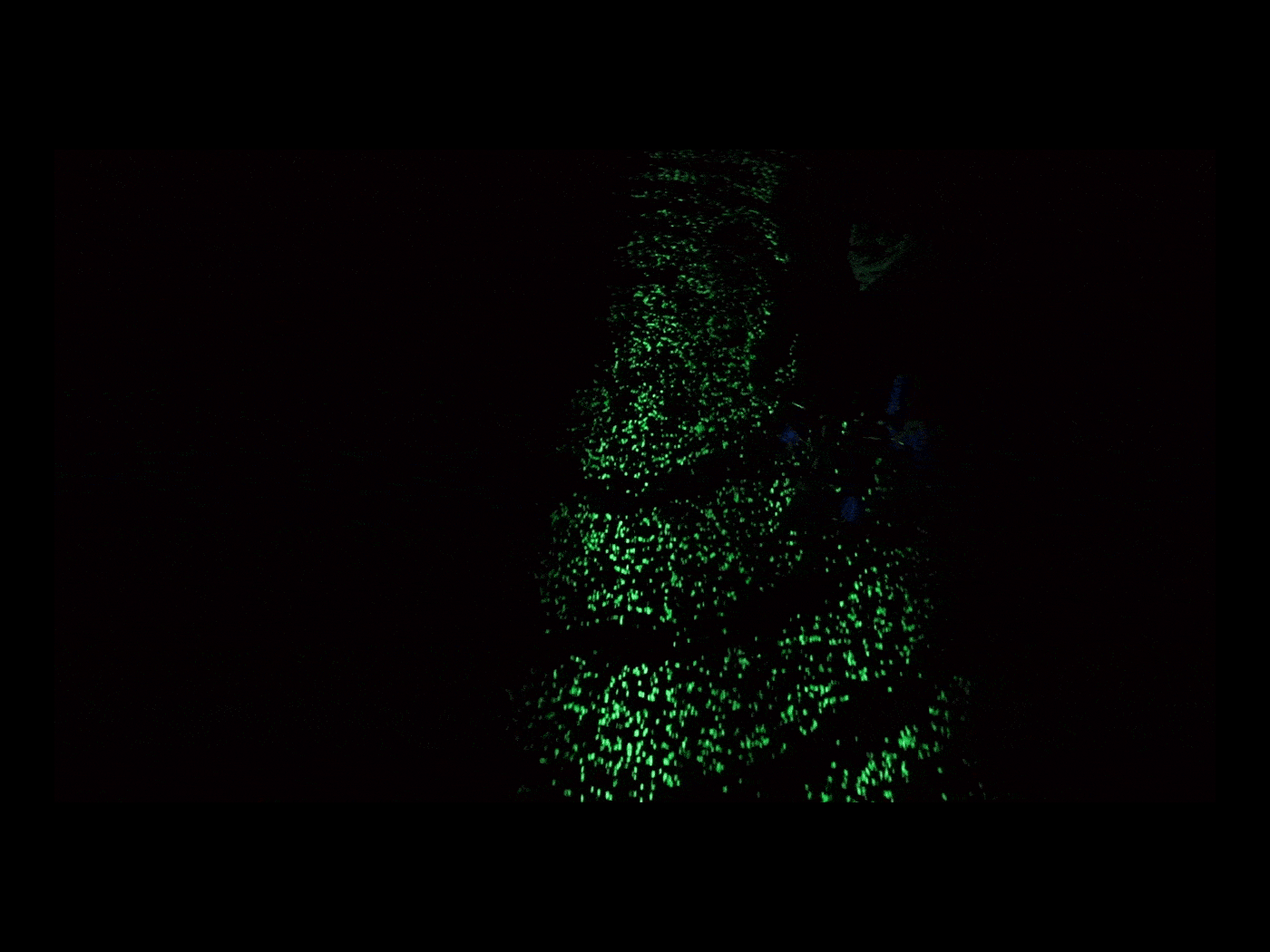Fossils From One of the World's First Reefs Can Be Found on Mountains in Nevada
Archaeocyaths were the original reef builders, and one of the best places to see them is in the desert
The Search for a Better Treatment for Eating Disorders
Cognitive behavioral therapy is working well for some, but scientists are seeking new innovations to help people with anorexia, bulimia and binge eating
Archaeologists Discover Oldest Domesticated Dog Remains in Americas
Exciting secrets unearthed on Haida Gwaii include a canine tooth, roughly 11,000-year-old stone tools and the tantalizing signs of far more to come
How Cup Noodles Became the Instant Ramen for Americans
Released in Japan 50 years ago, the portable meal proved to be one of the biggest transpacific business success stories of all time
What Drives Aquatic Animals to Make Vertical Migrations?
Researchers are trying to shed light on what leads many water dwellers—from plankton to large fish—to commute daily from the depths to the surface
Regulators Look to Protect a Seabird Hotspot in the Middle of the Atlantic Ocean
Scientists have identified a key seabird feeding ground in need of safeguarding
Playing Recordings of a Healthy Ocean Can Help Restore Marine Ecosystems
Scientists are using a 'fake it til you make it' approach to attract animals to coral reefs and other degraded habitats
A Brief Scientific History of Glass
Featuring ingots, shipwrecks and an international trade in colors, the material’s rich past is being traced using modern archaeology and materials science
Will Glow-in-the-Dark Materials Someday Light Our Cities?
Substances that persistently luminesce could be used in streets, sidewalks and buildings
Crayons Aren't Just for Kids
Mixed media artist Lisa Solomon describes how she and five other artists have embraced Crayola in their work
This Apparel Company Wants to Have a Profound Effect on Your Energy Use
LifeLabs Design was founded by a pair of Stanford professors who have developed fabrics capable of cooling and warming the wearer
Presumed Extinct Tentacled Butterfly Ray Is Found
Scientists were shocked to find the species holding out in the water off Iran
The Real Betty Crocker May Never Have Existed, but She Still Became a Symbol for American Women
Created as a customer service tool 100 years ago, the fictional character marks the evolution of domesticity in the United States
Futures
The Smithsonian's Arts and Industries Building re-opens on November 20 with a thought-provoking exploration of what lies ahead for humanity
How Scientists Are Using Robotic Animals to Learn About Real Ones
Biomimetic bots can teach researchers a lot about how creatures interact in the natural world
How Coastal Darkening Is Harming Kelp Forests
The environmental threat that researchers are only beginning to study is dramatically reducing the productivity of the plant
Could We Chat With Whales?
An ambitious project is attempting to interpret sperm whale clicks with artificial intelligence, then talk back to them
Honey Has Numerous Health Benefits for Bees
From pesticide detox to increased longevity, the pros of the sweet stuff go well beyond simply nourishing the hardworking insects in the hive
What Drove Homo Erectus Out of Africa?
Excavations at a site in northern Israel are at the heart of a debate about the species' migrations
How Steller's Sea Cows Impacted the Environment They Left Behind
A new paper explores the ways these extinct megaherbivores would have reshaped kelp forests across the North Pacific
Page 15 of 23
:focal(800x602:801x603)/https://tf-cmsv2-smithsonianmag-media.s3.amazonaws.com/filer_public/4e/f4/4ef4b279-4463-4463-9ebb-2704b40aa5fe/deathvalleyreefs_web.jpg)
:focal(1061x707:1062x708)/https://tf-cmsv2-smithsonianmag-media.s3.amazonaws.com/filer_public/1a/9f/1a9f265b-086d-4acc-8a7d-525c1d397995/gettyimages-1288252363.jpg)
:focal(800x602:801x603)/https://tf-cmsv2-smithsonianmag-media.s3.amazonaws.com/filer_public/23/8a/238a8d6d-adec-4021-accb-45666e6ed781/gettyimages-524858152_web.jpg)
:focal(968x650:969x651)/https://tf-cmsv2-smithsonianmag-media.s3.amazonaws.com/filer_public/e4/e3/e4e3fcfe-329c-4fc7-9fb8-b7fb2b4e3b0a/cup_noodles.jpeg)
:focal(800x602:801x603)/https://tf-cmsv2-smithsonianmag-media.s3.amazonaws.com/filer_public/72/10/72109b13-2be1-4fc9-8b42-0d15f608bda7/gettyimages-1234946480_web.jpg)
:focal(800x602:801x603)/https://tf-cmsv2-smithsonianmag-media.s3.amazonaws.com/filer_public/8b/c1/8bc15bd9-bbab-40fc-8495-b42e53972bf8/great-shearwater-7_web.jpg)
:focal(512x341:513x342)/https://tf-cmsv2-smithsonianmag-media.s3.amazonaws.com/filer_public/4a/3a/4a3ada81-732c-4170-8276-7b0708462e70/gettyimages-1206036361.jpg)
:focal(800x602:801x603)/https://tf-cmsv2-smithsonianmag-media.s3.amazonaws.com/filer_public/77/e7/77e7b946-0056-4330-9158-8f0f506a9486/372015001_web_1.jpg)

:focal(1296x1248:1297x1249)/https://tf-cmsv2-smithsonianmag-media.s3.amazonaws.com/filer_public/ea/bc/eabcef26-3f16-4e7a-9a2b-aaf7f7348777/p_43_harvest_credit_diem_chau.jpg)
:focal(4752x3168:4753x3169)/https://tf-cmsv2-smithsonianmag-media.s3.amazonaws.com/filer_public/ea/24/ea247fdd-cffa-4553-a157-3b38ad30b4d0/unisex_warmlife_vest_black_3_copy.jpg)
:focal(800x602:801x603)/https://tf-cmsv2-smithsonianmag-media.s3.amazonaws.com/filer_public/82/3d/823d479c-6a58-4745-81b5-4977c27ecbde/adult_female_tbr_web.jpg)
:focal(1851x1454:1852x1455)/https://tf-cmsv2-smithsonianmag-media.s3.amazonaws.com/filer_public/ef/ea/efea6f5a-c830-4657-bb7b-559054f28756/gettyimages-3228089.jpg)
:focal(1600x899:1601x900)/https://tf-cmsv2-smithsonianmag-media.s3.amazonaws.com/filer_public/4c/5a/4c5aed0d-e383-4b33-a2e5-d6ba1000fae3/futures-artist_rendering.jpeg)
:focal(405x238:406x239)/https://tf-cmsv2-smithsonianmag-media.s3.amazonaws.com/filer_public/ac/97/ac9731a7-8ad9-4cf2-b60e-1c4bb772348e/robofish.jpeg)
:focal(800x602:801x603)/https://tf-cmsv2-smithsonianmag-media.s3.amazonaws.com/filer_public/bd/72/bd724c9b-a60b-4cc0-8283-555490f96eb0/gettyimages-635826440_web.jpg)
:focal(3178x2043:3179x2044)/https://tf-cmsv2-smithsonianmag-media.s3.amazonaws.com/filer_public/40/60/4060db00-7995-4515-addd-731c7005e415/three_sperm_whale_calfs_from_unit_r_photo_amanda_cotton.jpg)
:focal(800x602:801x603)/https://tf-cmsv2-smithsonianmag-media.s3.amazonaws.com/filer_public/95/dd/95dda731-8e79-4656-bce4-23e1851b3c58/gettyimages-1178083137_web.jpg)
:focal(577x433:578x434)/https://tf-cmsv2-smithsonianmag-media.s3.amazonaws.com/filer_public/4b/5a/4b5a80ff-b0f4-4d4d-b4a8-704a392cfc67/01_ubeidiya-landscape_web.jpg)
:focal(800x602:801x603)/https://tf-cmsv2-smithsonianmag-media.s3.amazonaws.com/filer_public/49/39/49399045-82ab-4ae8-8310-4cb5b37dc612/gettyimages-113490433_web.jpg)